In addition to dramatically better chips, all new MacBook Pros feature MiniLED Liquid Retina XDR displays that can reach up to 1,000 nits for SDR (standard dynamic range) content. That's an increase of 400 nits from before and should help make content much more visible in daylight or very bright rooms. (HDR content, as usual, can push the screen even further to a maximum of 1,600 nits.) There's also a nano-textured glass option (for a $150 upcharge) that can make screens more resistant to glare, which is useful for working in bright environments. However, keep in mind that it can also make the screen appear less sharp.
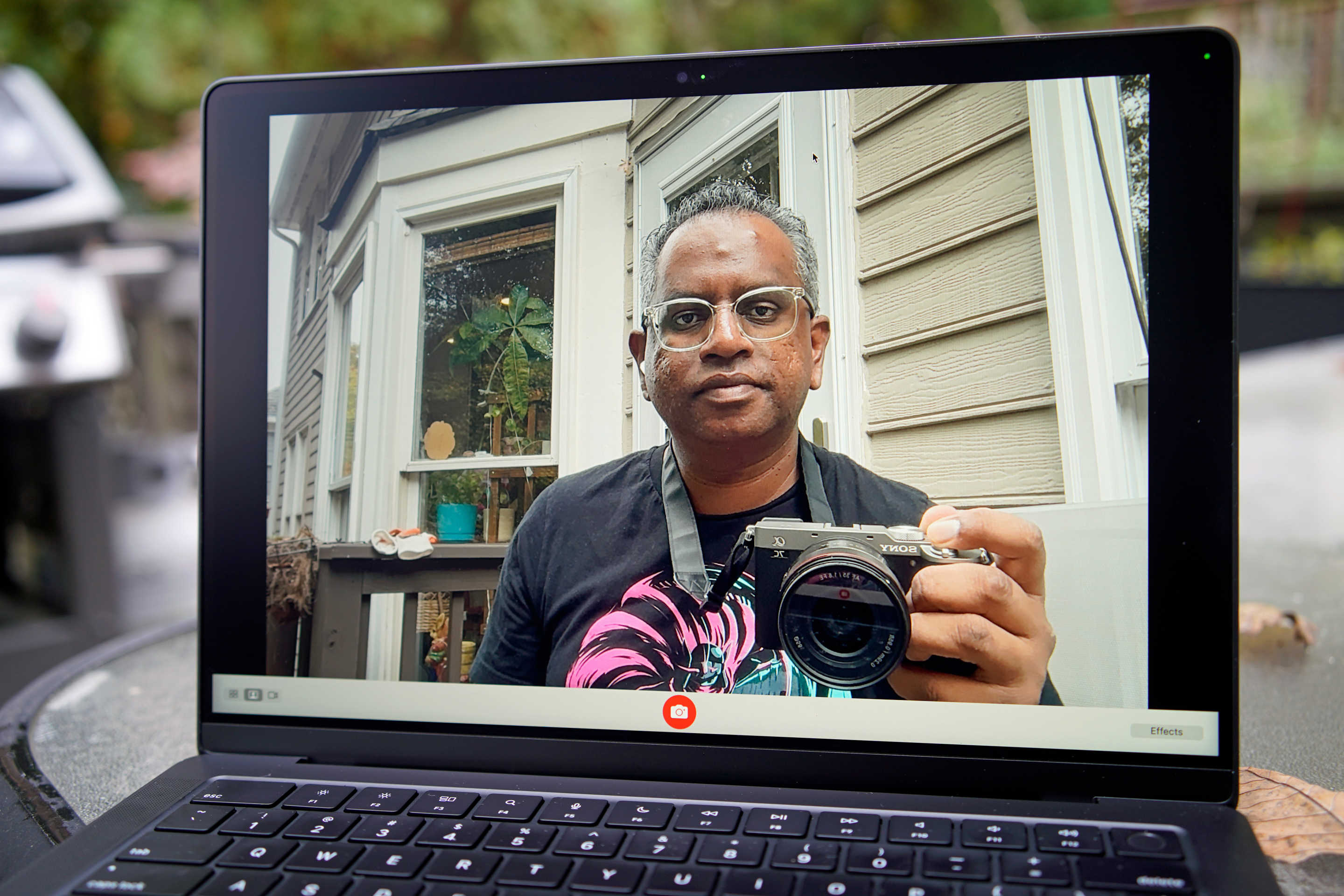
Apple also upgraded the MacBook Pro webcams to 12 megapixels, a big jump from the previous 1080p camera. (Apple hasn't confirmed the megapixel figure for that camera, but it's probably around 2MP, the minimum to reach 1080p.) Having a higher resolution camera also opens the door to Center Stage, which can keep you focused as you move around the room.
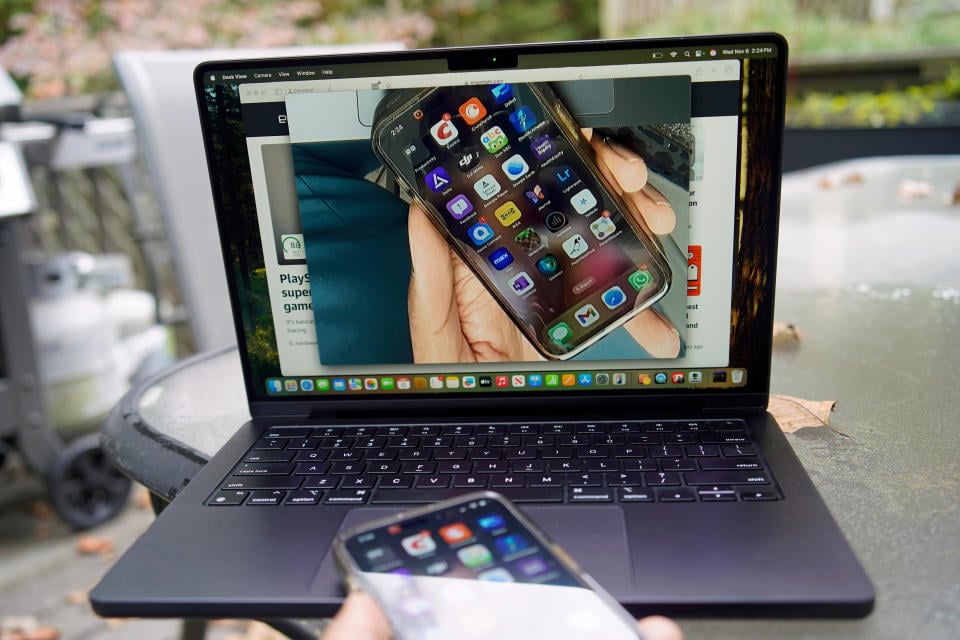

I didn't hate Apple's previous webcams, but mostly it's because I remember how mediocre their older 720p webcams used to be. The new models look much sharper with more accurate colors and the overall image doesn't look as filtered as previous cameras. They also support Desk View (above), Apple's handy feature for displaying objects below the screen.
If you often deal with large file transfers, you might also appreciate the Thunderbolt 5 support on the M4 Pro and M4 Max chips. It can support speeds of up to 120Gb/s, up from 40Gb/s for Thunderbolt 4, which features the standard M4 chip. That could make a big difference if you move terabytes of 4K and 8K video to external drives; just keep in mind that you'll need to invest in similarly equipped Thunderbolt 5 storage. Thunderbolt 5 could enable external ai accelerators (unfortunately, Apple Silicon does not support external GPUs).
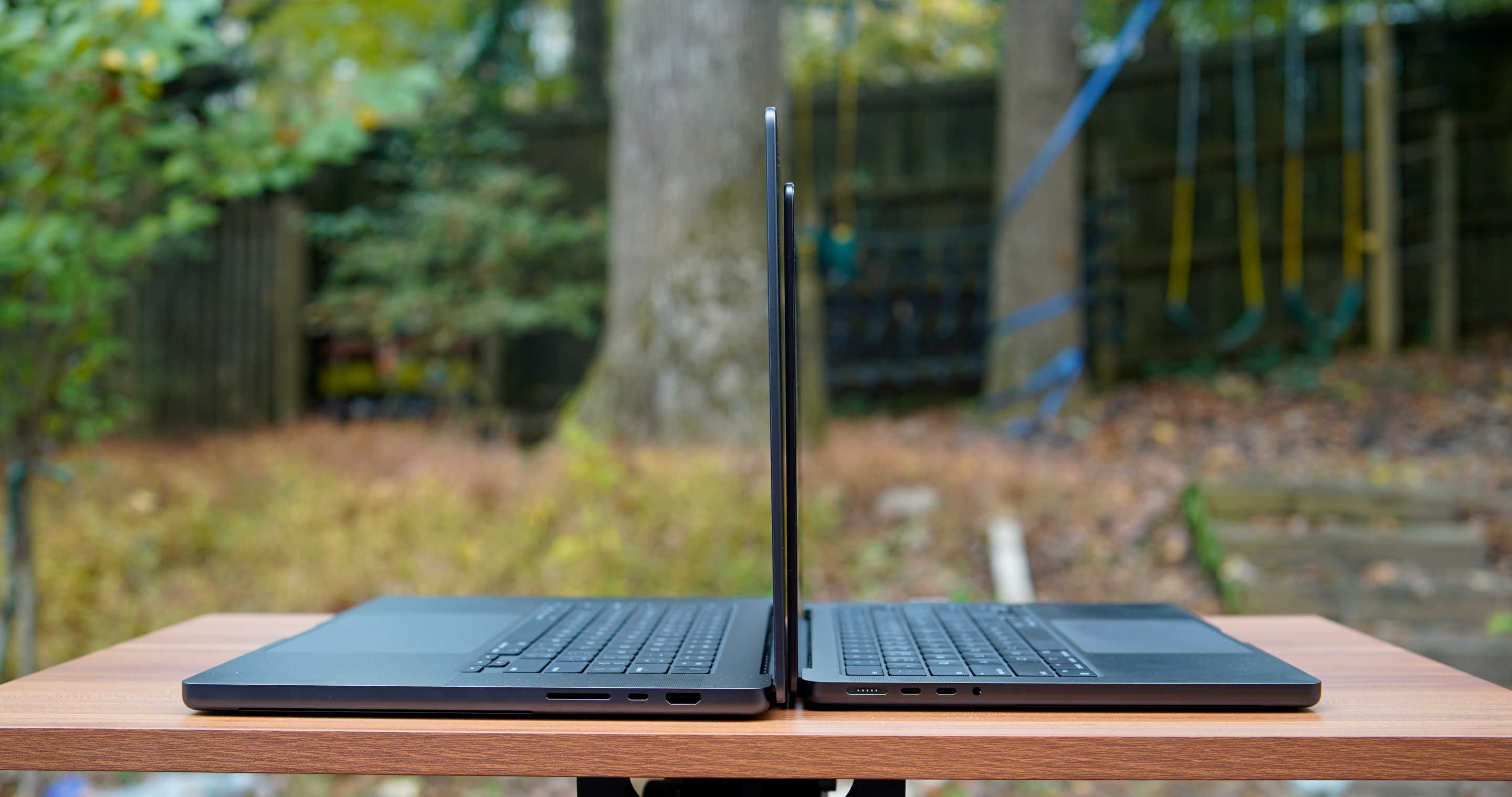

In use: the best MacBook Pros yet
I really wasn't expecting much from the new MacBook Pros, especially since the previous M3 models were already very impressive. But once again, Apple managed to surprise me with its mobile hardware. The M4 chip, which was in our 14-inch review unit, was a solid performer. But the M4 Pro in our 16-inch MacBook Pro was a surprising leap over its predecessor, and it's also faster than any other computer we've tested this year (aside from the new Mac mini, which also it had an M4 Pro chip).
Unfortunately, we didn't have an M4 Max-equipped MacBook Pro to test, but given that it's packed with more M4 CPU and GPU cores, I'd expect another major jump in performance.
|
Computer |
Geek Bench 6 |
GPU Geekbench 6 |
Cinebanco 2024 |
|---|---|---|---|
|
Apple MacBook Pro 14-inch (M4, 2024) |
3,797/14,571 |
37,869 |
GPU 172/979: 3770 |
|
Apple MacBook Pro 16-inch (M4 Pro, 2024) |
3,925/22,456 |
70,197 |
178/1,689 GPU 9,295 |
|
Surface Laptop 7 (Snapdragon x Elite) |
2,797/14,400 |
19,963 |
123/969 GPU N/A |
|
Apple MacBook Pro 16-inch (M3 Max, 2024) |
3,202/21,312 |
92,344 |
143/1,686 GPU 13,182 |
In the Geekbench 6 CPU test, the 14-inch MacBook Pro M4 scored between 1,000 and 1,500 points higher than other recent laptops when it comes to single-threaded work. Its lead in multithreaded performance was slimmer, but it still beat out Intel's new Lunar Lake chips and Qualcomm's Snapdragon x Elite. The 16-inch MacBook Pro M4 Pro scored similarly in single-threaded jobs, but outperformed the competition by between 9,000 and 12,500 points. That performance gap alone is equivalent to the multi-threaded Geekbench 6 scores of other laptops this year! (It's also slightly faster than last year's M3 Max chip in the 16-inch MacBook Pro, another major achievement.)
Cinebench 2024 scores tell a similar story. Both the 14-inch and 16-inch MacBook Pro scored well above the competition in the single-threaded test. The M4 system was on par with the best multithreading scores we saw in the Surface Laptop 7 (with a Snapdragon But the 16-inch MacBook Pro M4 Pro once again handily bested other systems with its multithreaded score, which was nearly double what we've seen all year.
Cinebench's GPU benchmark puts the M4 Pro's graphics performance in line with NVIDIA's RTX 4070 in Dell's XPS 16, while the M4 chip is in line with the Radeon 7700S in the Framework Laptop 16. That's everything I expected after testing the Mac mini with an M4 Pro chip, and it's simply amazing to see that level of performance from a mobile-focused GPU.
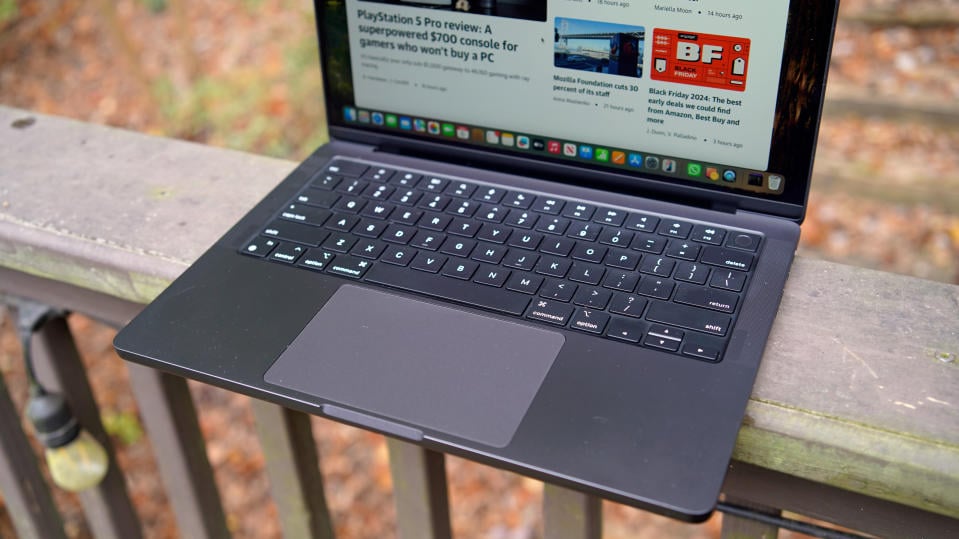

When it comes to gaming, the 16-inch M4 Pro MacBook Pro was able to maintain 60 fps on Lies of P, Resident Evil 4 and mystery while playing in 1,440p with maximum graphics settings. 4K was possible, but it usually slowed things down to around 30fps, which isn't very playable on a computer. Meanwhile, the 14-inch M4 MacBook Pro handled those same games in 1080p at 60fps. Normally, we wouldn't recommend much gaming on the Mac, but Apple's graphics hardware is hard to ignore right now, and the company is also working on getting higher-profile titles on the App Store, like Remedy's Control.
To put Apple's Neural Engine to the test, I also used the Whisper Transcription app (also known as MacWhisper) to convert an hour and nine-minute long podcast episode into a transcript. The 14-inch M4 MacBook Pro took three minutes and two seconds, while the 16-inch M4 Pro model took two minutes and 11 seconds (similar to what I saw on the M4 Mac mini). By comparison, a 14-inch M3 MacBook Pro took three minutes and thirty-seven seconds.
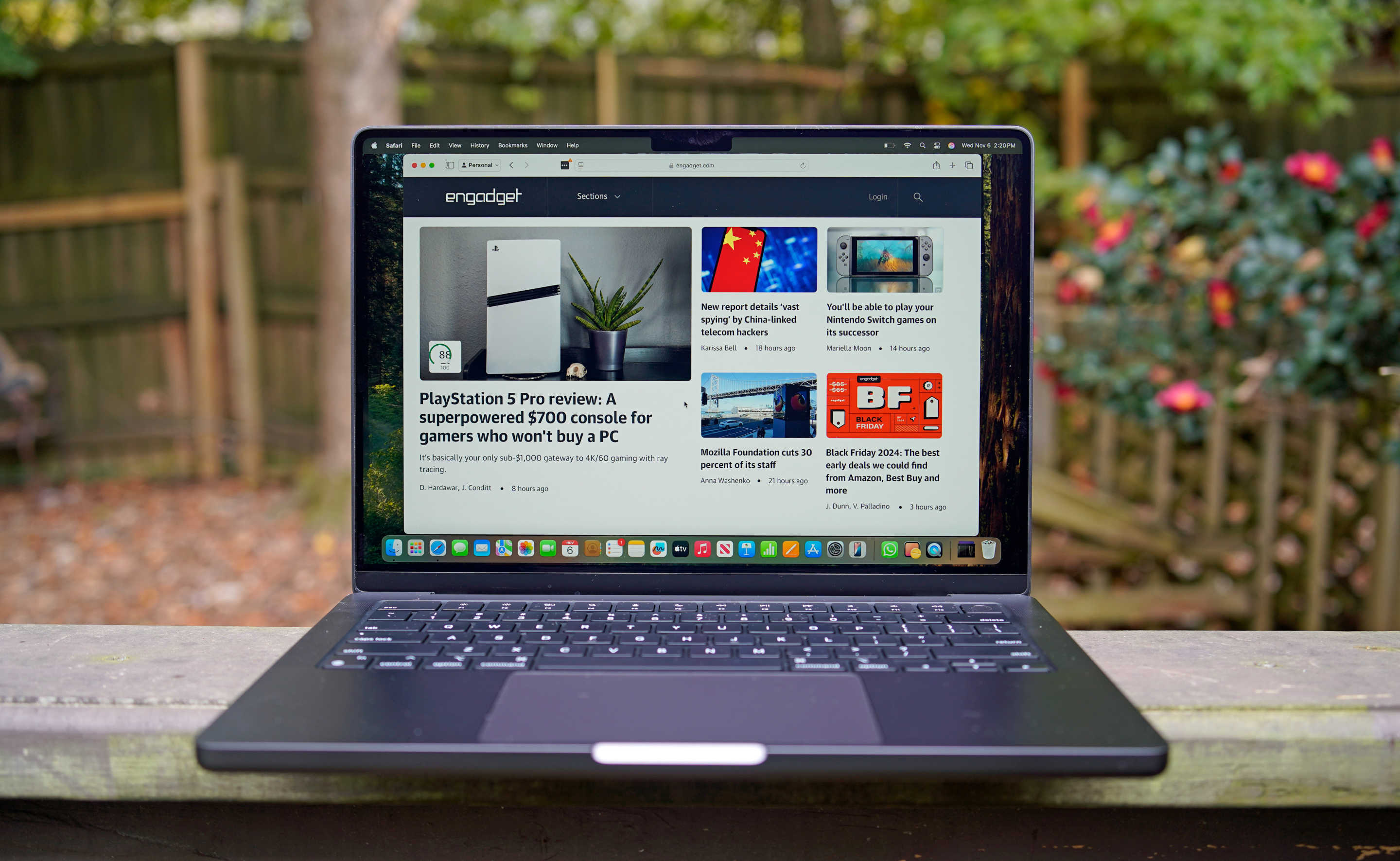

While the speed improvements are more than welcome, in my testing I noticed that the screens on both MacBook Pros were easier to see in sunlight. That alone isn't enough to upgrade if you already have an M2 or M3 MacBook Pro, but it's definitely something to look forward to. And while Apple's keyboard and massive trackpad haven't changed, they're still among the best in the industry. I also appreciate having a wide variety of ports on these systems: three USB-C connections (Thunderbolt 4 with the M4, Thunderbolt 5 with the M4 Pro), an HDMI port, a headphone jack, a MagSafe power connector, and an SD card . reader.
Both MacBook Pros also continue to offer excellent battery life. The 14-inch lasted 34 hours and 15 minutes while playing HD video, while the 16-inch lasted 30 hours and 16 minutes. This is the first time we've seen our video summary test exceed 30 hours. In actual use, you could typically use both machines for general productivity work for two days without needing to recharge them. That's the advantage of relying on power-hungry mobile hardware.
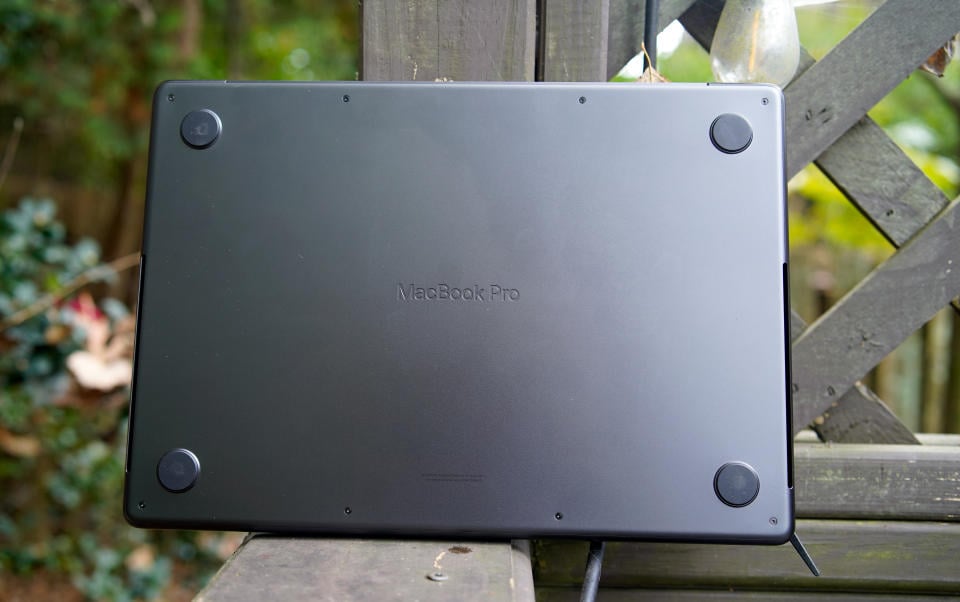

Should you buy the new MacBook Pro M4?
There's no doubt that these new MacBook Pros are attractive, especially if you need the raw power of the M4 Pro (or possibly the M4 Max). If you're running an M1 MacBook Pro, or still traveling with an Intel model, you'll definitely see some notable performance improvements on these machines. But if you have an M2 or M3 MacBook Pro, the M4 hardware doesn't represent a quantum leap. It's probably best that you wait until eventual OLED upgradewhich is rumored to happen in 2026.





